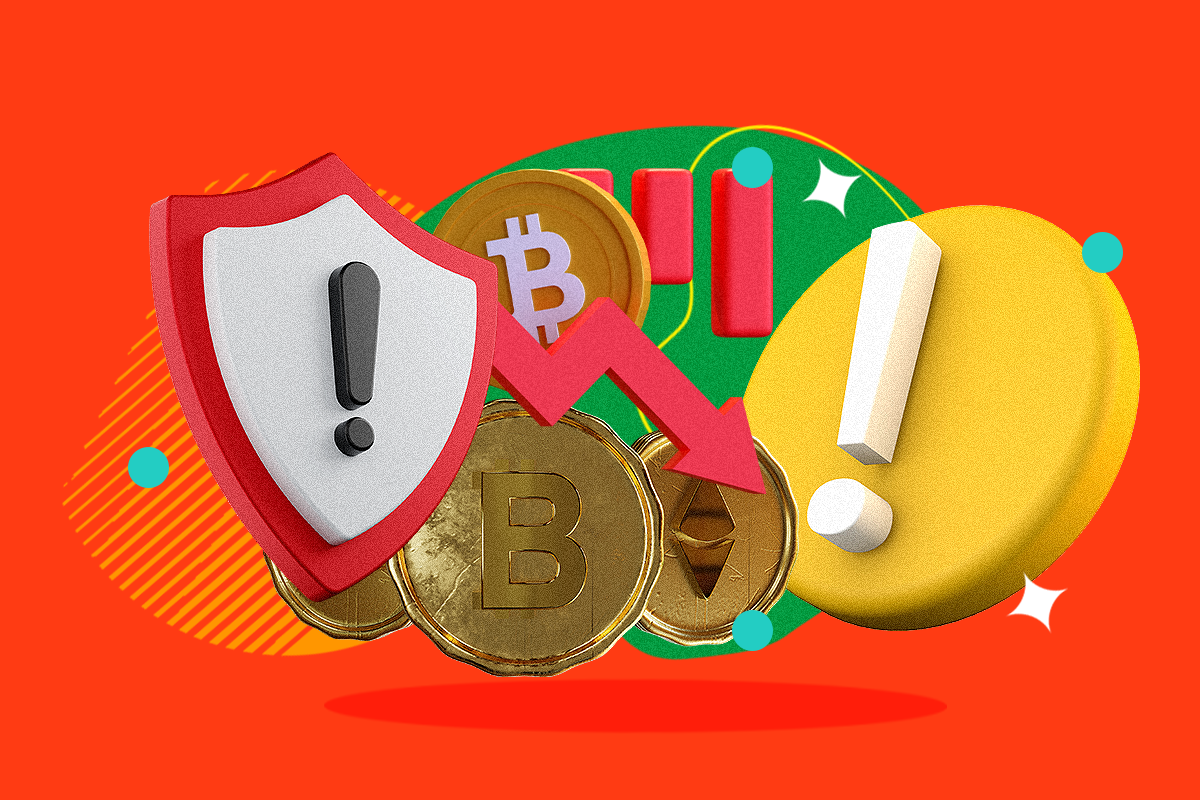The Crypto Crash Explained: How Monetary Policy and Unstable Stablecoins Caused a DeFi Free Fall
The higher they soar, the harder they fall. Crypto is constantly catching us off our guard.

Crypto is experiencing one of the largest crashes in history as economic uncertainty looms and markets flood with panic. After a year of seemingly unbridled growth, crypto has taken a turn for the worse. The stock market is waning and the prices of goods have reached record highs due to inflation, but cryptocurrencies are still teetering on the edge of instability.
The collapse of Terra had a sea of implications for the entire crypto market and was an indisputable signal that crypto winter had arrived.
Exactly what led us down this path is still up for debate, but key events over the past few months can be pieced together to paint a clearer picture of how we got to this crypto winter. Let’s look at how the crypto crash happened and what lessons we can learn from it.
Why did crypto crash?
After prices rose to all-time-highs in 2021, the sudden crash of the crypto market has many investors wondering what went wrong. Financial markets are known to naturally ebb and flow with economic cycles, but the latest spiraling of digital asset prices happened more rapidly than before.
Though it’s practically impossible to attribute the cryptocurrency market crash to specific causes, we can look at how certain events contributed to a crypto financial bubble that eventually burst.
Monetary policy
One of the main underlying causes of the crypto price drop originated from outside the crypto industry. Crypto became an increasingly popular risk-on investment among both institutional and retail investors. Bitcoin’s price saw speculative pumps as venture capital money flowed into the industry fueled by speculation and hype over the new disruptive asset class.
Crypto markets shot up as investors introduced new capital, but this took a turn when the Federal Reserve suddenly determined that inflation was too high at the end of 2021. As the discussion of interest rate hikes entered the milieu, investors grew more circumspect about digital assets, and crypto prices fell significantly—but this wasn’t the crash.
As the Federal Reserve shifted gears on its monetary policy, the unfettered growth of digital currencies and crypto projects ground to a halt. While crypto winter had decidedly begun by the new year, markets were still only flirting with crypto bearishness. Crypto investors had to be on high alert as just one small faltering would send the entire asset class tumbling.
Ecosystems collapse
Crypto was hurting by the start of 2022, but the fear scale hadn’t yet reached critical levels. In the first quarter, Bitcoin’s price was strained but barely supported at $38,000 as central banks around the world followed the Fed’s queue and tightened their monetary policies. Digital assets would inevitably face trying times as all signs pointed to an oncoming crypto winter.
While these macroeconomic shifts developed in the background, Terra’s algorithmic stablecoin protocol grew to $40 billion and the LUNA crypto price went up alongside it. Investors large and small grew more confident in UST as new investors kept getting lured in by double-digit yields on the Anchor DeFi platform. While some believed that Terra laid the foundation for algorithmic stablecoins to break new ground, the underlying mechanism was far from sustainable.
The trouble began when the price of UST dropped significantly below the peg. The Terra community sprang into action to save UST’s peg to the dollar, but this caused the price of LUNA to enter free fall and further destabilized the algorithmic stablecoin. By the time the Luna Foundation Guard deployed nearly $3 billion in Bitcoin to buy UST in a last-ditch effort to save UST, it was too late.
Not only did this move ultimately fail to save Terra—costing investors billions of dollars—but it also left more damage in its wake. Dumping BTC on the market caused the Bitcoin price to plummet even further. The collapse of Terra had a sea of implications for the entire crypto market and was an indisputable signal that crypto winter had arrived. The market data was written on the walls, so it was only a matter of time.
The butterfly effect
Within a matter of days following the Terra collapse, a chain reaction ensued that caused hundreds of billions of dollars in value to vanish from crypto. After LUNA was devastated and Bitcoin plunged below $20,000, the domino effect continued to negatively impact ETH and other major cryptos. Though everyone with exposure to crypto markets saw losses on their investments, the real losers were those forced to realize those losses.
The market was chock-full of risky speculative crypto positions thanks to DeFi trading platforms granting unprecedented access to leverage and collateralized borrowing. Bullish investors used leverage to take long positions on cryptos and doubled down on their positions by borrowing against their cryptos. But the sharp price crash meant many of those risky positions were margin called, and those liquidations drove prices down even further.
This wouldn’t have happened if it were just retail investors making these risky trades, but the reason this had such a huge impact was that a lot of those risky positions were held by the Celsius network. Celsius—bating investors with competitively high APY rates, as Anchor did—would take their users’ crypto and deposit it into risky DeFi positions, but when those positions were liquidated after the price crash, those investors were left holding the bag.
Celsius dealt a huge blow to their users when the platform froze withdrawals, but what’s more significant is the indelible scar it left on consumer confidence in crypto. Coming on the heels of a giant stablecoin crash, the positivity garnered around cryptocurrencies over the past couple of years shattered as firms like Three Arrows Capital went bankrupt and other companies laid off swaths of employees.
Will the crypto market recover?
It’s important to remember that the crypto crash is happening within the broader economic context of inflation and rising interest rates. Shifts in monetary policy across the globe have changed the outlook on speculative assets and made investors pessimistic about crypto and other risky investment assets.
While sentiments within the crypto space are hopeful that the asset class will recover, it’s unlikely to happen soon under current macroeconomic circumstances. We’re likely to see more sell pressure—and low crypto prices—with the further tightening of economic policies, especially as scrutiny is placed on the crypto industry by regulators.
It’s uncertain whether crypto is still in the midst of a crash or if it’s on the recovery, but one thing we can be sure of is that crypto is not dead. Prices falling sharply means less speculation, which has motivated professionals to keep building and ramping up innovation in the crypto industry. This newfound focus may lead crypto to gradually become less of a bubble and more like a sustainable digital economy.
If you’re still bullish on crypto and want to be ready to invest when prices are down, Kraken is a low-fee crypto exchange that supports a long list of coins
